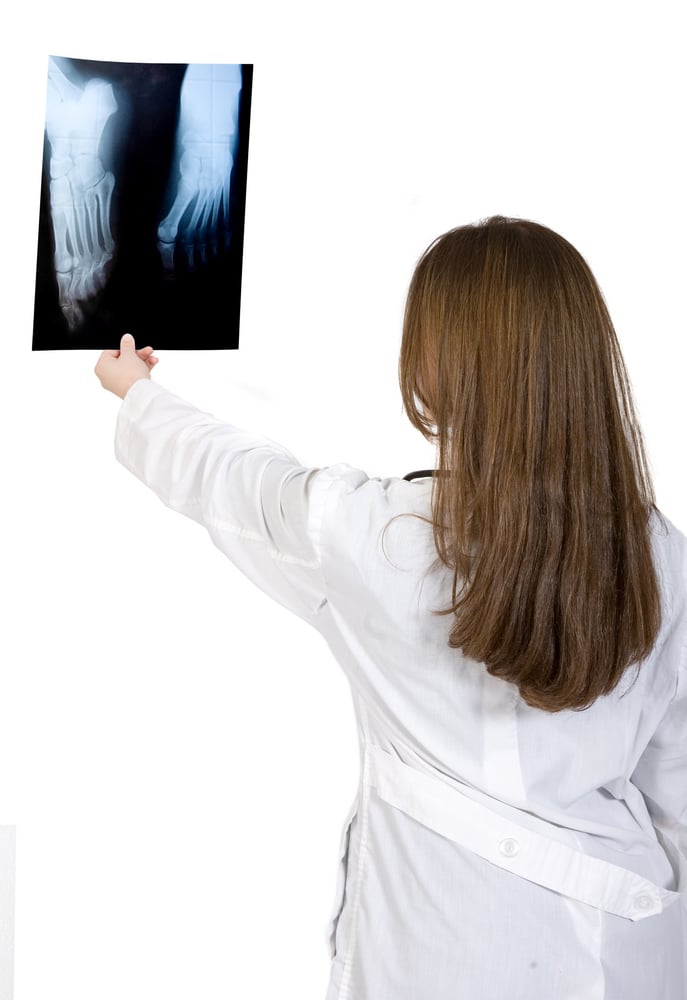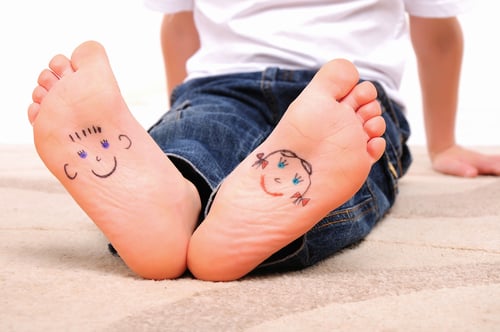
Does one of your toes curl or bend upwards? It could be caused by a deformity known as hammer toe. Learn more about this condition and how it is treated.
What is Hammertoe?
Hammertoe is a structural deformity that causes the toe to curl or bend upwards. While this can happen to any toe on the foot, it most commonly happens to the second and third toes.
What Causes Hammertoes?
The toes on your foot contain two extremely flexible joints. These joints allow the toe to bend and flex at the bottom and the middle. Typically, when these joints are not in use they stay in a straight, forward facing position. This doesn’t happen if you have hammertoes.
With hammertoes, the joint of the toe stays in a flexed or curled position which results in the toe facing downwards. This causes the toe to develop a bump-like appearance.
There are a number things that can cause the toe joint to become flexed or curled resulting in a hammertoe. The most common causes of hammertoes include:
- Injury
- Wearing tight or improperly fit shoes
- Extremely high foot arch
- Arthritis
- Tight tendons and ligaments in the foot
- Bunions – bunions can place pressure on the nearby toe which can force the toe joint to become flexed or curled
- Spinal cord damage
- Nerve damage
Symptoms of Hammertoes
When hammertoes first develop, the symptoms you experience are relatively mild. However, if left untreated the symptoms could get worse.
Some of the most common symptoms of hammertoes include:
- Downward bend to the toe
- Pain when walking
- Inability to wiggle or move your toes
- Stiffness when flexing or moving the entire foot
- Toes that have a claw-like appearance
- Formation of calluses or corns on the tops of the toes
How do Doctors Diagnosis Hammertoes?
Most doctors are able to diagnosis hammertoes with just a brief physical exam. Sometimes x-rays and other imaging may be used to help determine if the hammertoe may be caused by an underlying condition, such as muscle, ligament or bone injury or arthritis, which may need to be treated.
What Type of Treatment is Available for Hammertoes?
Your treatment options will vary depending upon the severity of your hammertoe. Mild hammertoe can often successfully be treated with the following:
- Changing your footwear so they fit properly
- Avoid wearing narrow shoes, such as high heels, for prolonged periods of time
- Wearing insoles or toe pads to correct high arches or help to even out pressure on the foot
- Using pads and cushions to treat and relieve pressure caused by corns and bunions
Hammertoes can be corrected with surgery. However, this is usually done as a last resort when either previous treatment options have proven unsuccessful or when there is extreme pain.
Hammertoe surgery is an outpatient procedure. The goal of the surgery is to reposition your toe so it is no longer in a curled or flexed position. To do this, your surgeon will remove any injured or deformed bone then realign your joints and tendons so they allow for proper placement of your toe.
If you believe you may be suffering from hammertoe, contact us for help. You might not be experiencing any pain now, but if preventative measures are not taken now your condition could get worse. We will help you get a proper diagnosis, provide treatment recommendations, and answer any questions you may have about hammertoes or any other foot or ankle issues.






